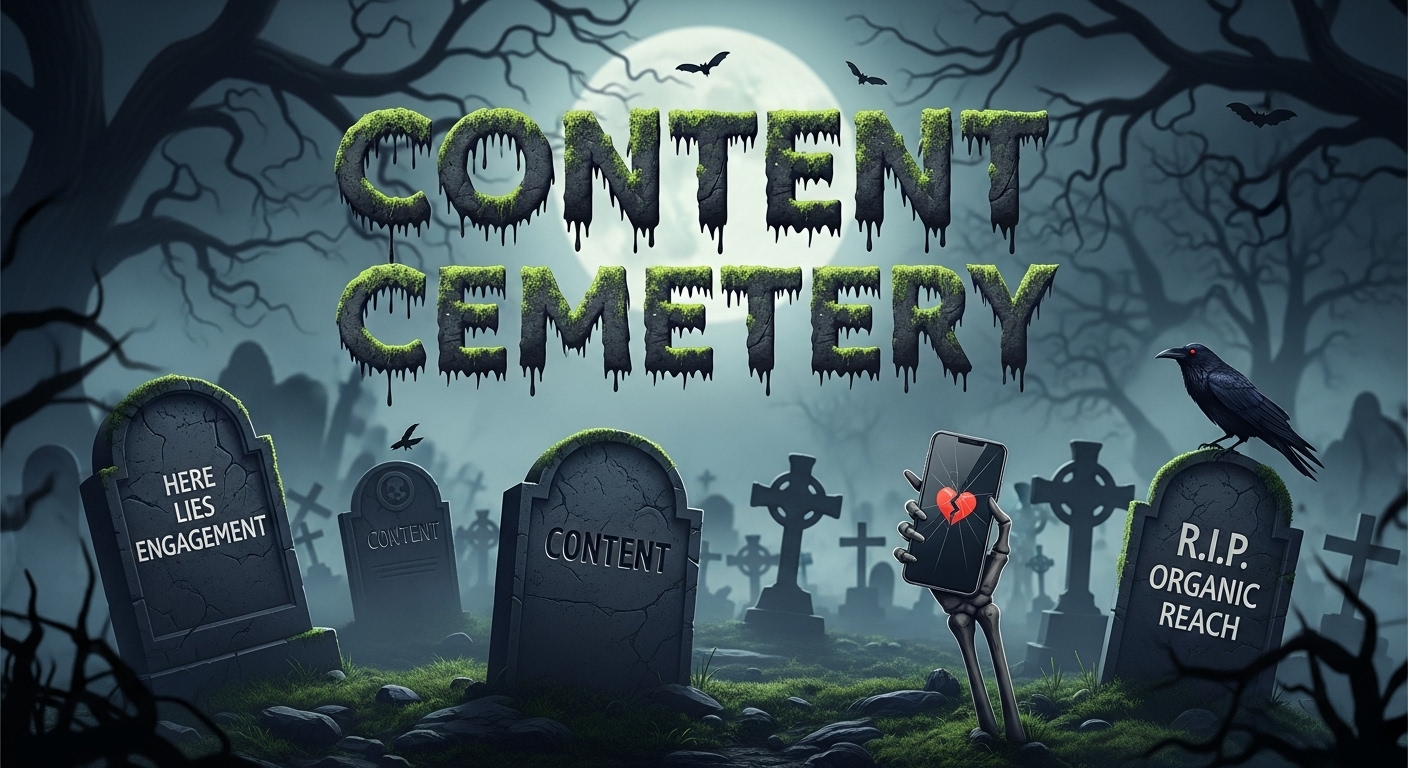
6 Steps to Create Content Marketing Alignment and Drive Efficiency

Content marketing is not, and has never been, an easy part of marketing. In fact, one could make the argument that it is the most difficult part of marketing, which is why 57% of B2B marketers say creating the right content for their audience is the biggest challenge. Additionally, only 52% of B2C marketers believe that their content is moderately successful (only 4% believe it to be extremely successful). So why is content marketing so difficult? Or why are other elements of marketing seemingly so much easier?
Typically, this boils down to one simple statement: while businesses understand the importance of content marketing, there is very little investment into building a data infrastructure around content. While tracking leads may be easier for some businesses, it does not specifically explain what is working and why. That’s why marketers need to wake up and realize the importance of using content intelligence alongside revenue marketing metrics.
Still on the fence around the importance of content marketing alignment? These six steps will prove that you have gaps in your content marketing strategy, and will explore how to drive more efficiency in your approach towards content marketing.
1. The Crucial Role of Measurement & Reporting
As the saying goes: “data doesn’t lie.” However, the metrics you measure your content with matter. If you are only looking at vanity metrics, like views and traffic, you are doing yourself and your content team a disservice. Content, much like any other aspect of your marketing, needs to be measured and reported on. Where most content marketers make a mistake is not measuring content the same way as other marketing activities. Content marketers should look beyond basic metrics and instead focus on conversions or qualified leads, to ensure the content that is being created is helping produce a positive ROI.
2. The Importance of Executive Buy-in
More and more businesses are realizing the value of content. While your business understands the need for content, is there buy-in across your whole executive team? If not, a measurement framework will help get you that buy-in. A measurement framework gives your team the opportunity to showcase how content will support business outcomes and create a positive ROI. Not only will a measurement framework help prove that you are thinking of content beyond just views, but it will also help you justify spend, and prove that content is helping drive conversions and is adding business value.
3. The Necessity of Fostering a Collaborative Environment
I’m sure you know what your team is working on, but does everyone else in your organization? If the answer is no, then you are not working in alignment with the rest of your business. Content should never be created in a vacuum. Content leaders should work in collaboration with the rest of the marketing team (and revenue teams), creating content in alignment with the marketing strategy.
The best way to achieve this collaborative environment is to create an editorial board that has representation from every other marketing department and revenue team. This will show that you are dedicated not just to your goals, but ensuring that content can help the rest of the business achieve their goals. Don’t think of your content team as a support function. Instead, think of them as a critical part of the marketing machine. The more integrated your content team is into every aspect of the revenue side of business, the more you can ensure you are providing value and insight that helps support the needs of campaigns and revenue initiatives.
4. Tapping Into the Power of AI
Harnessing the power of AI is no longer just an option; it's a necessity for content marketers striving to stay ahead. AI not only streamlines content production and optimization processes, but it also serves as a powerful tool for gathering invaluable insights into content performance. With AI, marketers can automatically analyze what type of content resonates with their audience and what falls flat, perpetually using these insights to refine and improve content strategies. By leveraging AI-driven insights, content teams can ensure alignment with larger business objectives, driving efficiency through data-driven decision-making and automated optimization. With AI as a strategic ally, content marketers can unlock new levels of efficiency and effectiveness in their content marketing efforts.
5. Understanding the Value of Content Distribution
For a lot of marketers, content may just be a number’s game. Did you publish new content? Did that content get viewed? However, content creation is not just about creating a piece of content and posting it on your website. That won’t help drive efficiency and it certainly won’t help you understand why the piece of content was valuable. If the extent of your content distribution is just publishing it on your website, then you need to revisit the previous step on fostering a collaborative environment.
Content creation is only as valuable as the channels that content is distributed. In order to understand the value of your channels, you need the right data and software to unlock insights to guide you on the right path. The right data will allow you to understand where to distribute the content that you create, why your audience is engaged with the content and what future expectations they may have. Utilizing journey visualization and sentiment data will give you the necessary insights into your audience to understand a proper distribution strategy.
6. Unlocking Success Through Customer Journey Insights
The last step in creating content marketing alignment is having the right technology to reveal customer journey insights. While most businesses rely on web analytics tools to measure content engagement and effectiveness, a web analytics tool only scratches the surface. Additionally, web analytics tools are never prioritized for the needs of content teams and most content marketers are not sufficiently trained around web analytics tools to build out a strong data ecosystem.
Instead, content marketers need software that is dedicated to their craft and is easy to use. Content marketers should be looking for solutions that can reveal the full customer journey in a matter of seconds. The software should also be able to easily show all the content your audience interacts with on the way towards a conversion, not just the first and last pieces they interacted with. If content marketers have the right technology, they can ensure efficiency in not only their work, but also the work of the rest of the marketing team by showing how audiences engage with content, and why and how it drives towards a conversion. When the rest of the marketing team and revenue teams understand that the customer journey is not linear, it will allow you to create more effective campaigns and build a stronger web environment.
Why Your Content Team Needs Knotch
Content teams are never going to be able to create alignment if not given the right tools and resources. Much like marketing operations, analytics or demand generation, having the right technology will allow teams to be more effective and work more collectively across the organization. The same goes for content marketers. Software is not a one-size-fits-all category and content marketers should not be forced to use technology that is not designed for their needs.
Instead, content marketers should consider Knotch. Knotch enables CMOs and their teams to measure the effectiveness of their digital content and use real-time actionable data insights to improve content performance, and ultimately drive better business results. The Knotch content intelligence platform is used by hundreds of brands and Fortune 500 companies across North America including Bank of America, Dropbox, JP Morgan Chase, Marriott, Square, Zillow and many more. To learn how Knotch can help you drive content performance in 2024 and beyond, visit knotch.com/request-demo.
Become a thought leader
Become a thought leader
Trusted by the largest (and now smartest) brands in the world.
“Before Knotch we did not understand what content was driving business results. Now we understand which content moves the needle. Knotch’s cohesive reporting and insights paint a real picture of what’s happening on our website instead of the patchwork quilt that comes from a Google Analytics approach. With Knotch we have been able to re-prioritize ad spend, route better leads to our SDR team, and inform our content development initiatives.”

"The Knotch platform ensures that we deliver high-performing content tailored to young home shoppers, enhancing their experience and driving better business outcomes.”

"Our partnership with Knotch has been highly successful, empowering us to leverage data-driven insights and refine our content strategy.”









